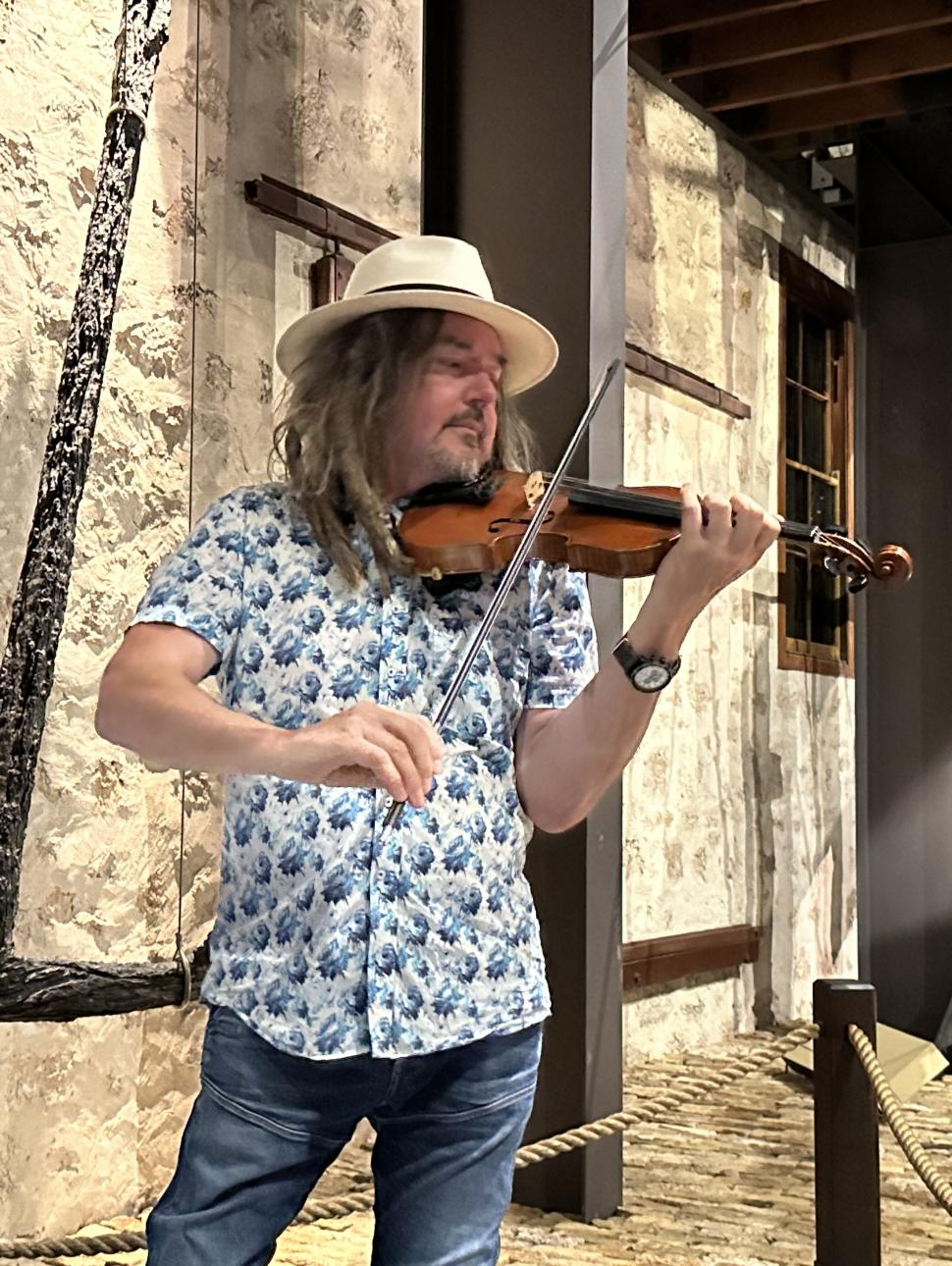
Krakatoa—Volcanic Cataclysm, Shockwaves and Sunsets
Dates
Saturday 5 July | 3pm–4pm
Adult | $35*
Concession | $30*
Student | $25*
*plus booking fee
Site access information
WA Shipwrecks Museum is fully accessible. Call 1300 134 081 for assistance. More about accessibility and amenities >
Be taken on a musical journey with Rupert Guenther exploring effects of the eruption of Krakatoa.
Krakatoa—Volcanic Cataclysm, Shockwaves and Sunsets is based on the events of the physical shockwaves surrounding the eruption and destruction of the island of Krakatoa on 27th of August 1883.
For several years afterward, the world witnessed red sunsets caused by volcanic ash in the atmosphere. These surreal skies were captured in paintings by renowned artists such as William Ascroft in England and Edvard Munch in Norway.
This new work features solo violin in five movements, musically describing the event and the energy of shockwaves, volcanic ash, and tsunami it sent out into the oceans and nearby lands.
The sonata, along with its ties to the sciences of seismology and volcanology and the stories of ships and seafarers, concludes with a deep connection to art. Humanity often turns to art for sanctuary and restoration.
The entire work is a set of extended improvisations for solo violin.
About Rupert Guenther
Rupert Guenther is a Perth-based Vienna-trained violinist-composer. His output of works since 2002 has seen over 35 albums and thousands of concerts premiering new works entirely through improvisation, utilising tonal, free-tonal, and soundscape modalities. He specialises in bespoke concerts of inspired new works and sonatas of his own breathtaking improvisations.
Every concert takes audiences on an immersive wellbeing journey as much as a musical one, presenting a new series of “spirit of place” works—inspired by human history, architecture, nature, and significant events through time. These include influences from landscape, science, astronomy, philosophy, paintings, poetry, geology, anthropology, ancient artefacts, the night skies, mystical knowledge, and personal stories.